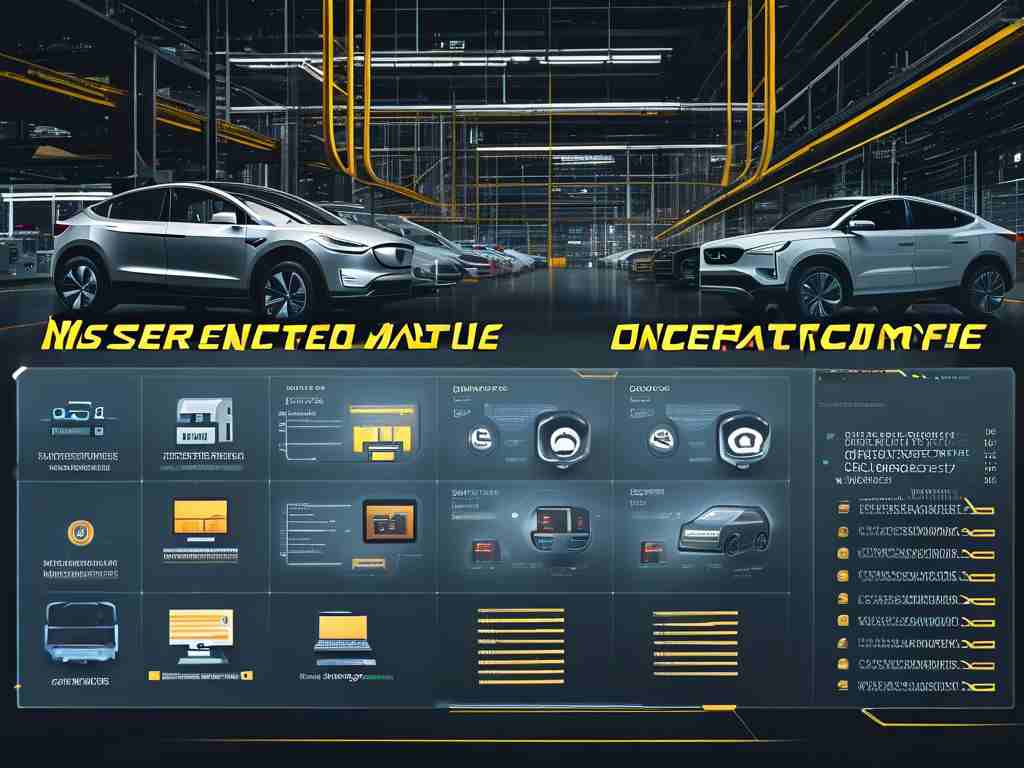The automotive industry has rapidly evolved with the integration of advanced technologies, making cybersecurity a top priority for manufacturers. As vehicles become more connected through features like over-the-air updates, infotainment systems, and autonomous driving, the risk of cyber threats such as hacking and data breaches escalates. To counter these vulnerabilities, automakers rely on robust encryption algorithms to safeguard sensitive data, ensure secure communication between electronic control units (ECUs), and protect user privacy. These algorithms form the backbone of automotive security frameworks, preventing unauthorized access and maintaining the integrity of vehicle operations.

One of the most widely adopted encryption methods in the automotive sector is the Advanced Encryption Standard (AES). AES operates as a symmetric-key algorithm, meaning the same key is used for both encryption and decryption, which makes it highly efficient for real-time data processing. In modern cars, AES is commonly employed to encrypt data transmitted across internal networks like the Controller Area Network (CAN bus). For instance, when sensors send critical information about engine performance or braking systems, AES ensures that this data remains confidential and tamper-proof. Its strength lies in its ability to handle large volumes of information quickly with minimal computational overhead, a crucial factor given the resource constraints of embedded automotive systems. Most implementations use AES-256, which provides a high level of security by utilizing 256-bit keys, making it resistant to brute-force attacks. As an example, a simple code snippet in C might demonstrate AES encryption for a message:
#include <openssl/aes.h>
void encrypt_data(const unsigned char *input, unsigned char *output, const AES_KEY *key) {
AES_encrypt(input, output, key); // Encrypts input data using AES
}
This snippet shows how automakers integrate AES into firmware to protect data flows, ensuring that even if intercepted, the information remains indecipherable without the correct key.
Alongside symmetric algorithms, automakers frequently utilize asymmetric encryption, with RSA being a prime example. RSA relies on a pair of keys—a public key for encryption and a private key for decryption—which enhances security for key exchange scenarios. In automotive applications, RSA plays a vital role in securing over-the-air software updates. When a manufacturer sends a firmware patch to a vehicle, the update is encrypted using the car's public key, and only the embedded private key can decrypt it, preventing malicious actors from injecting harmful code. This method also facilitates secure authentication during vehicle-to-cloud communications, such as when a car connects to a manufacturer's server for diagnostics. RSA's strength comes from its mathematical complexity, based on large prime numbers, which makes it highly secure against eavesdropping. However, it requires more computational power than AES, so automakers often combine it with symmetric algorithms in hybrid systems for optimal performance. For instance, a session key might be exchanged using RSA, and then AES handles the bulk data encryption.
Hash functions, particularly those from the Secure Hash Algorithm family like SHA-256, are indispensable for ensuring data integrity in automotive systems. SHA-256 generates a fixed-size hash value from input data, acting like a digital fingerprint. If even a single bit of the original data changes, the hash output alters completely, alerting systems to potential tampering. In vehicles, this is critical for verifying the authenticity of software modules or firmware during boot-up sequences. For example, when an ECU loads a new update, SHA-256 checks the hash against a trusted value stored in secure hardware to confirm it hasn't been altered by malware. This prevents "man-in-the-middle" attacks where hackers could modify code to gain control of critical functions like steering or acceleration. Automakers prefer SHA-256 due to its collision resistance, meaning it's computationally infeasible for two different inputs to produce the same hash, providing a reliable layer of protection.
Emerging algorithms such as Elliptic Curve Cryptography (ECC) are gaining traction in the automotive world for their efficiency and smaller key sizes. ECC offers security comparable to RSA but with reduced computational demands, making it ideal for resource-limited environments like electric vehicle batteries or IoT sensors. Automakers use ECC for secure key agreements in vehicle-to-everything (V2X) communications, enabling encrypted data sharing between cars and infrastructure without draining power. Despite its advantages, the adoption of newer algorithms faces challenges, including the need for standardization across global regulations and the looming threat of quantum computing, which could potentially break current encryption methods. To address this, the industry is exploring post-quantum cryptography, with automakers investing in research to future-proof their systems.
In , encryption algorithms like AES, RSA, SHA-256, and ECC are fundamental to automotive cybersecurity, each serving distinct roles in protecting vehicles from evolving threats. Automakers prioritize these methods based on factors like speed, security level, and compatibility with existing hardware, ensuring that modern cars remain safe and trustworthy for consumers. As technology advances, the continuous refinement of these algorithms will be essential to counter new risks and uphold the safety standards that define the future of mobility.

